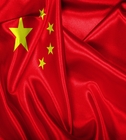Can the Chinese consumer continue to bolster the nation’s economy and defy the pessimists who believe its V-shaped recovery has to come to an end soon? 
That’s the golden question facing those investing in the region at the moment as geopolitical tensions swirl around a country which has been at the epicentre of events in 2020. China has very much moved to a consumption-led economy in recent years. In fact, according to a note from Matthews Asia, last year was the eighth consecutive year in which the consumer and services sector was the largest part of China’s GDP.
As we know, China was the first global economy in lockdown due to Covid-19 and with inflation-adjusted real retail sales plummeting almost 25 per cent year-on-year this January and February, expectations for the economy were exceptionally challenging.
Fast forward a few months to June and net retail sales were up almost 8 per cent year-on-year, with food & drink, auto and home buying also in recovery mode.
A good reference for this recovery is China’s 6.18 festival. Taking place in June, it is China’s second-biggest shopping event of the year. Despite the challenge of Covid-19, this year saw unprecedented levels of interest by Chinese merchants and platforms. The events’ creator JD.com announced that total orders reached $38bn, which was 33 per cent higher than the figure last year, as some 100,000 participating brands – double the number from last year – looked to make up for losses due to the pandemic.
Fidelity China Special Situations Trust manager Dale Nicholls says the continued acceleration of e-commerce penetration in China is no major surprise, adding that “faster development and higher penetration of the internet and mobile payments have led to greater opportunities for e-commerce. Growth in e-commerce in China continues to outpace most of the developed world, despite already high levels of penetration”.
Other areas are also set to see an increase in activity. An update from Janus Henderson says “there are now indications of a strong pickup when looking at cement, construction machinery and heavy-duty trucks sales. An uplift in infrastructure activity is expected in the second half of the year, following two years of low single-digit growth.
 Internal and external challenges remain
Internal and external challenges remain
Like most countries across the globe, much of the recovery in China is linked to containing the coronavirus. In the first 14 days of July, there were a total of only 77 new Covid-19 cases in China, compared to more than 800,000 in the US. Whether the numbers from China are to be taken with a pinch of salt is up for conjecture.
What we cannot overlook is the increasing tensions between China and other parts of the world – and particularly the US. One thing you cannot do with any emerging market economy is ignore the top-down outlook – namely which countries have good or bad political support, strong currency and account deficits for example.
It’s clear that relations between the US and China have worsened as a result of Covid-19. Importantly the trade war between them is only part of the problem – with technology and possible financial disputes also appearing. We have seen the tech challenges brought into the spotlight by the race for 5G, while I also remember reading recently that China now spends more on telecoms than the US, which has never previously happened.
The levers the US may pull on Chinese exports are wide-ranging – but China is a country which is becoming increasingly domestically focused. A recently passed US Senate bill that requires companies to comply with US regulatory audits or be forced to de-list from US stock exchanges could also pose issues for Chinese companies, with some looking to dual list in both Hong Kong and the US as a precautionary measure.
All of this and we have not even mentioned the political tensions with Hong Kong and their impact.
In its latest World Economic Outlook, the International Monetary Fund says China will be the only major economy to grow on a year-on-year basis in 2020, rising 1 per cent before an 8.2 per cent increase in 2021. The challenge for investors is to balance out whether the consumer-recovery – courtesy of a well-orchestrated escape from lockdown – will continue unabated as geopolitical tensions gather speed.
Those wanting to back the China consumer story may like to consider the Invesco China Equity fund, managed by Hong Kong-based co-managers Mike Shiao and Lorraine Kuo. The high conviction portfolio has a strong emphasis on the consumer story and has returned 101 per cent to investors in the past five years (to July 2020).
Another is the First State Greater China Growth fund managed by Martin Lau, which targets companies with high barriers to entry, pricing power and sustainable growth. Governance is very important although Martin is willing to invest in state-owned enterprises where governance is shown to be improving. The fund also has a strict valuation discipline in the 50-60 stock portfolio.
Those who prefer exposure through an emerging markets vehicle may wish to consider the Guinness Emerging Markets Equity Income fund, managed by Edmund Harriss and Mark Hammonds, which has more than 20 per cent invested in Chinese equities.
Darius McDermott is managing director of FundCalibre and Chelsea Financial Services. The views expressed above are his own and should not be taken as investment advice.





